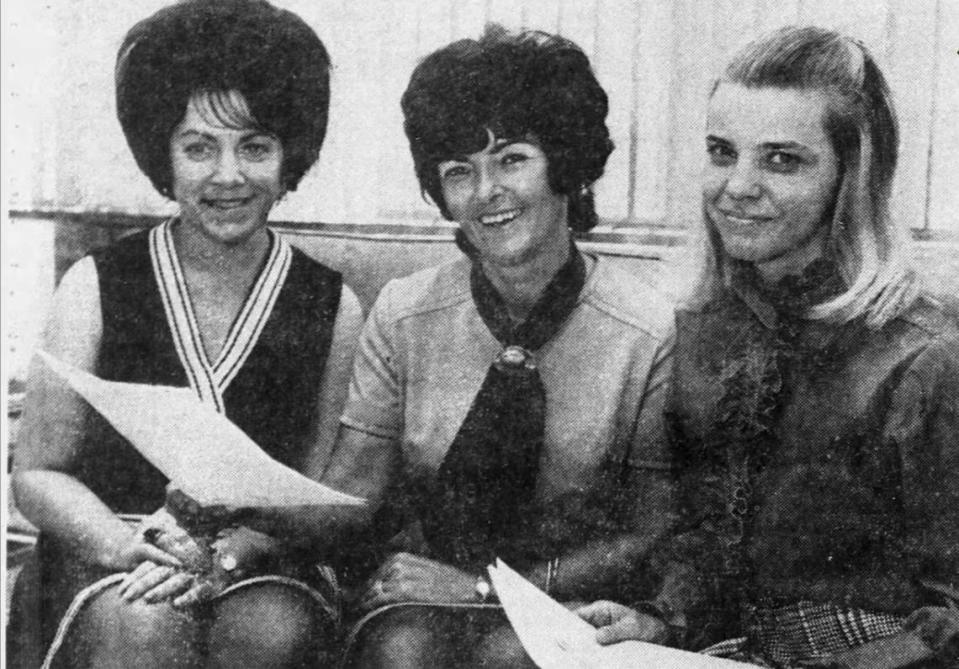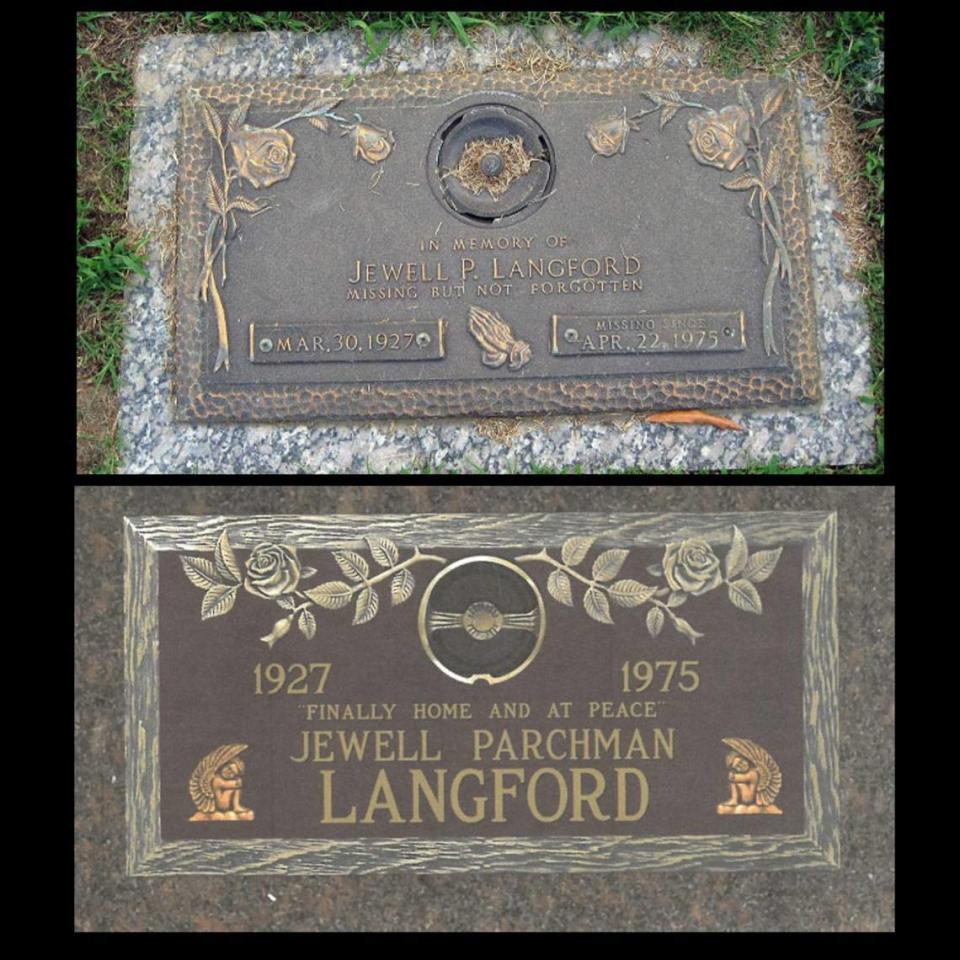Florida retiree, now 81, arrested in infamous murder of woman in Canada 48 years ago
About 50 years ago, Canadian police discovered a partially nude woman floating face down in a river west of Montreal — her hands and ankles strapped with neckties, her neck bound with a black coaxial cable wire, and her head covered with a hand cloth, towel and tablecloth.
The identity of the woman, Lalla Jewel Langford, would not be known to authorities until 2021, thanks to a DNA sample of her exhumed body that matched up with her relatives.
The man now accused of killing the 48-year-old American woman in 1975 was arrested last month by deputy U.S. marshals at a retirement home in Hollywood, Florida.
Rodney Mervyn Nichols, 81, is charged with Langford’s murder — thanks again to DNA technology along with a confession — and he remains in custody at the Federal Detention Center in Miami awaiting extradition this fall to Ontario in one of Canada’s oldest and most infamous cold cases.
In early February of last year, officers with the Ontario Provincial Police traveled to Hollywood to question Nichols with FBI agents at the North-Lake Retirement Home. Nichols, who lived with Langford after she had moved from Tennessee to Montreal 48 years ago, admitted to the crime when investigators showed him photographs of the neckties that had been used to bind her hands and ankles.
Nichols “identified the neckties as belonging to him,” according to an extradition complaint filed by U.S. prosecutor Lawrence LaVecchio in Fort Lauderdale federal court, the day before Nichols’ arrest on July 25.
“Canadian authorities then advised Nichols that he had admitted to the murder of Langford and that he could be charged,” the complaint says. After consulting with a legal aid lawyer in Canada, Nichols told investigators that “he had an altercation with Langford that started in his home in Montreal, and that he subsequently dumped her body in the Nation River.”
When asked why he confessed, Nichols said he “had to come clean,” the complaint says.
However, in a court filing, Nichols’ lawyer with the Federal Public Defender’s Office questioned the validity of the confession, asserting that the former Canadian man suffers from dementia, needs medication and must use a wheelchair. Assistant Federal Public Defender Bernardo Lopez said that despite the serious charge, Nichols is not a danger to the community or a flight risk and should be allowed to return to his assisted-living facility in Hollywood where he had lived in recent years until his extradition to Ontario. An extradition hearing is set for Sept. 26.
“The Federal Detention Center is no place for someone with Mr. Nichol’s frailties and vulnerabilities,” Lopez said in the filing.
‘Nation River Lady’
Langford had been known for decades only as the “Nation River Lady” after her remains were found on May 3, 1975, floating in the Nation River, a short distance from a highway bridge near Casselman, Ontario — about 90 miles west of Montreal.
Technology that uses DNA to find genetic matches led to identifying her as Langford, Ontario Provincial Police said at a news conference last month.
Police say Langford’s case marked the first time that Canadian authorities used genetic forensic technology to identify a victim. Other methods of identification, including creating a 3D facial approximation of her in 2017, were tried but had no success.
Detective Inspector Daniel Nadeau said Langford was a well-known member of the business community in Jackson, Tennessee, who co-owned a spa with her ex-husband.
She traveled to Montreal in April 1975 and moved into a house with her boyfriend, Nichols, then 32.

“At that time, her family in Tennessee had reported her missing,” Nadeau said.
At the time of her disappearance, Langford’s belongings, including her Cadillac, remained at her home in Montreal, according to the extradition complaint. The Montreal Police Service investigated her disappearance, but were unable to locate Langford or bring charges.
A May 1975 autopsy report by Canadian authorities “revealed two fracture injuries to the victim’s larynx,” and then a coroner’s report concluded that the “cause of death was strangulation by ligature of the neck.”
“Further, the absence of water in the victim’s lungs suggested to Canadian authorities that she was deceased before entering the water,” the extradition complaint says.
In June 1975, Montreal police investigators questioned Nichols at the home he shared with Langford, but they did not consider him a suspect, according to the complaint. Nichols said the couple got into an argument and that she left on her own for Vancouver that June, calling him by phone to join her there.
Langford’s identity remained unknown for more than 40 years because of the unavailability of DNA evidence. In 2011, Canadian authorities conducted a forensic analysis of the items found on the victim’s body, including two large, blood-stained pieces of green cloth that covered her face and neck when her body was found in the Nation River.
Following the DNA
A partial male DNA profile was found in the bloodstains on the green cloth, the complaint says. Then, the Ontario Provincial Police collected DNA samples from nine male persons of interest and compared each with the partial DNA male profile found on the green cloth. Each person of interest was excluded as the source of the DNA.
Seven years later, Canadian authorities exhumed the victim’s body from a cemetery in Toronto, and the Ontario Centre of Forensic Science took a DNA sample from the victim. With assistance from the DNA Doe Project and FBI, the Ontario police obtained DNA samples from several members of Langford’s extended family and compared them with the sample obtained from the exhumed body.
On July 13, 2021, the Ontario police pathologists positively identified the victim as Langford.
Investigators said that because Langford’s body was discovered in May 1975 — one month before Nichols claimed he spoke on the phone with her from Vancouver in early June — they concluded that Nichols “deliberately misled” them during his interview, the complaint says.

In February of last year, Ontario police investigators and FBI agents visited Nichols at the retirement home in Hollywood to question him about the disappearance and murder of Langford. He denied any involvement, but then said that he and Langford had taken out a sailboat, the boat capsized and she drowned. Then he said he “tried to drown Langford in the Ottawa River because he was depressed,” the extradition complaint says.
But when investigators showed him the photographs of the neckties that had been used to bind Langford’s hands and ankles, Nichols said they belonged to him.
During that February 2022 interview, Nichols provided a sample of his DNA to the Ontario police investigators. His sample was compared to the partial male DNA profile that was collected a decade earlier from the blood on the green cloth that was wrapped around Langford’s face and neck.
The Ontario police pathologists concluded that the partial DNA from the blood on the green cloth was “190 times more likely to be Nichols’s DNA than the DNA of any other person unrelated to Nichols.”
Information from the Associated Press was used for this story.

 Yahoo Finance
Yahoo Finance 